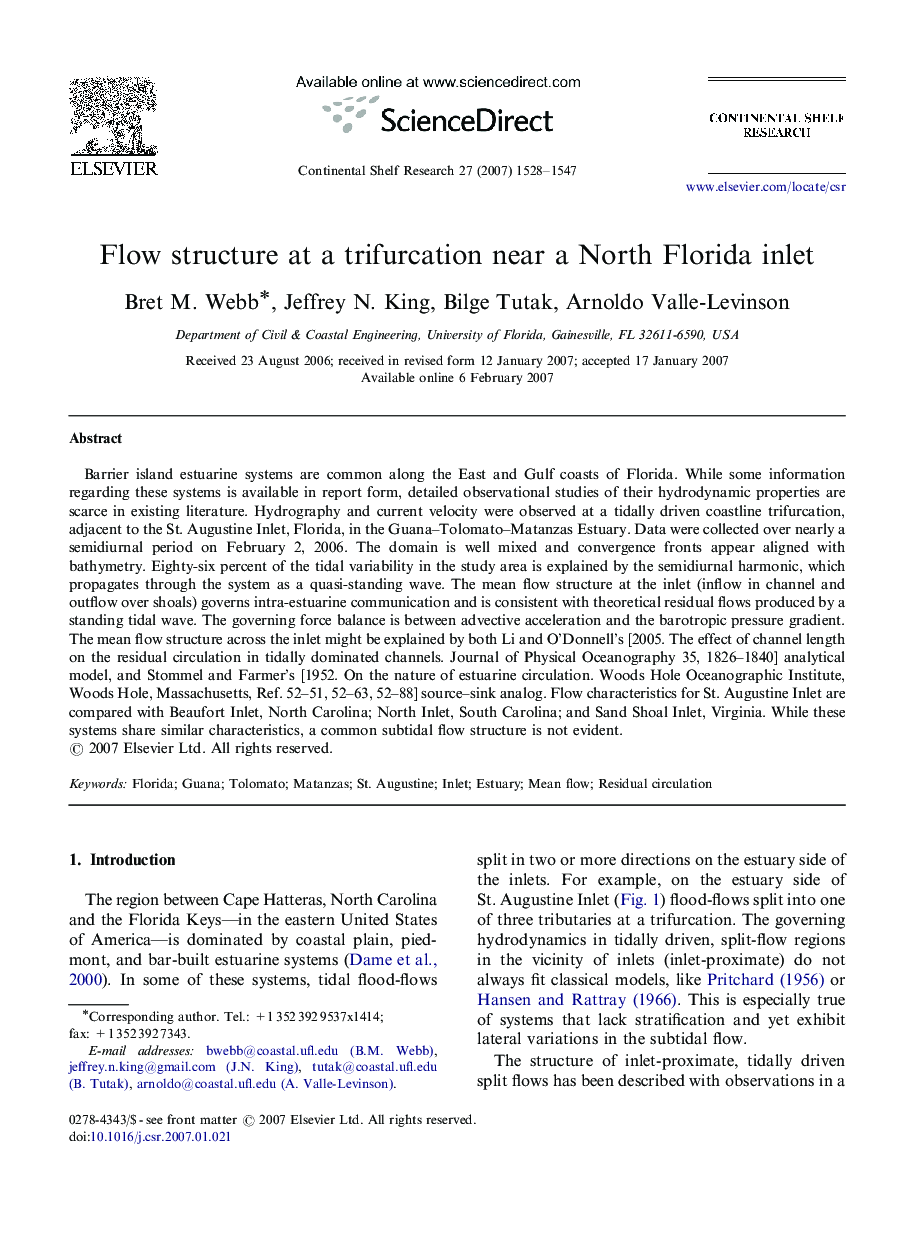| کد مقاله | کد نشریه | سال انتشار | مقاله انگلیسی | نسخه تمام متن |
|---|---|---|---|---|
| 4533781 | 1626188 | 2007 | 20 صفحه PDF | دانلود رایگان |

Barrier island estuarine systems are common along the East and Gulf coasts of Florida. While some information regarding these systems is available in report form, detailed observational studies of their hydrodynamic properties are scarce in existing literature. Hydrography and current velocity were observed at a tidally driven coastline trifurcation, adjacent to the St. Augustine Inlet, Florida, in the Guana–Tolomato–Matanzas Estuary. Data were collected over nearly a semidiurnal period on February 2, 2006. The domain is well mixed and convergence fronts appear aligned with bathymetry. Eighty-six percent of the tidal variability in the study area is explained by the semidiurnal harmonic, which propagates through the system as a quasi-standing wave. The mean flow structure at the inlet (inflow in channel and outflow over shoals) governs intra-estuarine communication and is consistent with theoretical residual flows produced by a standing tidal wave. The governing force balance is between advective acceleration and the barotropic pressure gradient. The mean flow structure across the inlet might be explained by both Li and O’Donnell's [2005. The effect of channel length on the residual circulation in tidally dominated channels. Journal of Physical Oceanography 35, 1826–1840] analytical model, and Stommel and Farmer's [1952. On the nature of estuarine circulation. Woods Hole Oceanographic Institute, Woods Hole, Massachusetts, Ref. 52–51, 52–63, 52–88] source–sink analog. Flow characteristics for St. Augustine Inlet are compared with Beaufort Inlet, North Carolina; North Inlet, South Carolina; and Sand Shoal Inlet, Virginia. While these systems share similar characteristics, a common subtidal flow structure is not evident.
Journal: Continental Shelf Research - Volume 27, Issues 10–11, 1 June 2007, Pages 1528–1547